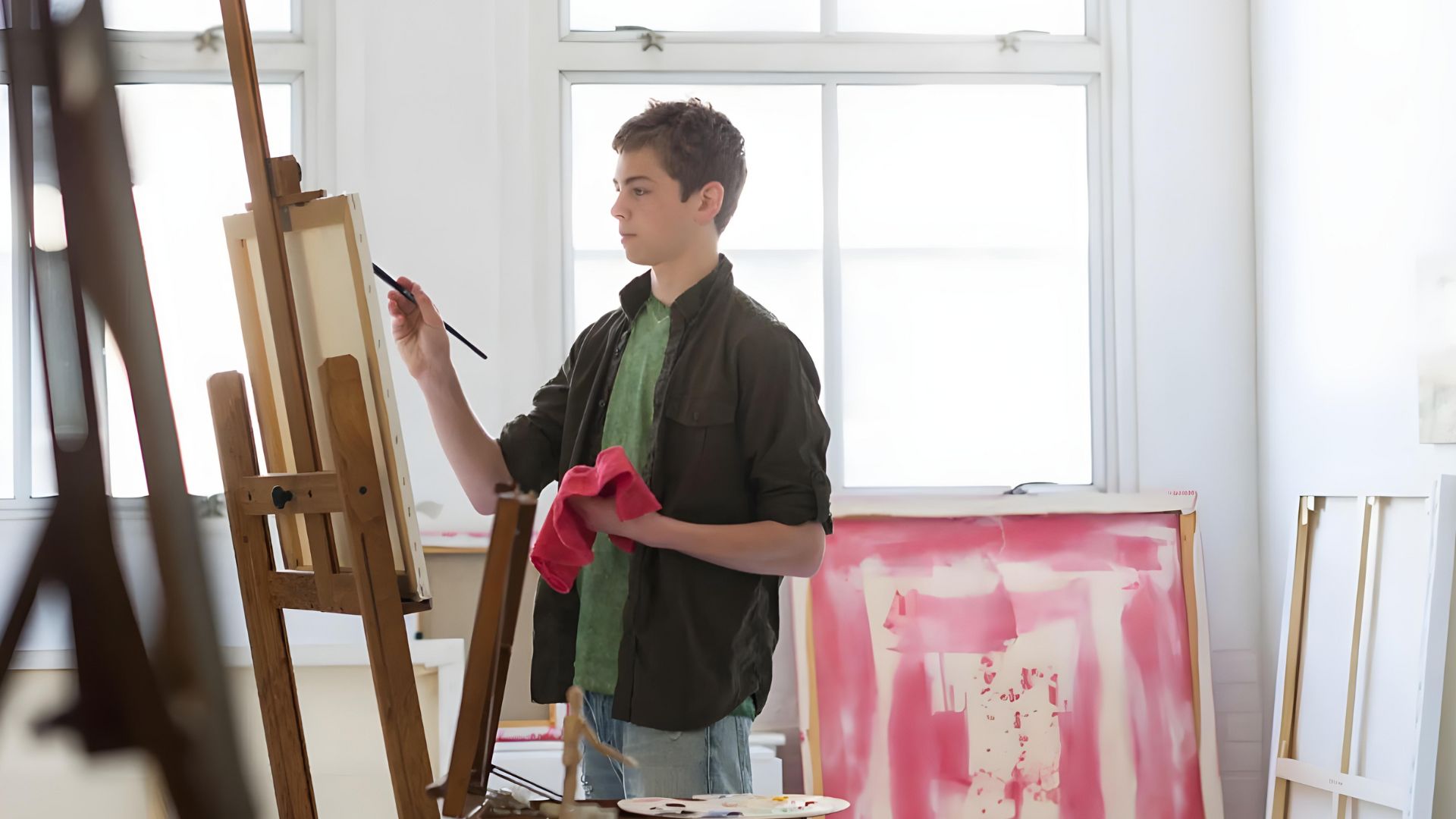When emotions feel too big for words, art can speak volumes. At White River Academy, we offer teens a safe, creative space where they can express themselves without judgment. Our Art Therapy program allows them to process complex emotions like grief, trauma, anxiety, and frustration through hands-on, meaningful expression.
Guided by licensed therapists, each session helps teens better understand their internal world and gain emotional clarity. Through art, they find not only their voice but also strength, insight, and healing. In our supportive Utah-based environment, creativity becomes a bridge to resilience and self-discovery.
Art therapy is a clinically recognized method that uses the creative process to support mental and emotional well-being. Rather than focusing solely on verbal discussion, it encourages teens to express themselves through visual art forms – like drawing, painting, or mixed media.
A licensed therapist facilitates sessions, helping teens reflect on their artwork to uncover emotions, thoughts, and patterns that may be hidden. This approach can be particularly effective for adolescents dealing with addiction, trauma, anxiety, or low self-esteem.
Through structured creative exploration, art therapy for teens promotes insight, emotional release, and the development of healthier thought and behavior patterns in a supportive therapeutic setting.
Art therapy is especially beneficial for teens who feel overwhelmed by emotions or trapped by addictive behaviors.
Through creative engagement, they experience:
This process gives teens the opportunity to reframe their experiences, reconnect with their inner selves, and begin building a healthier, more hopeful future.
Why Choose us?
At White River Academy, we understand that healing takes many forms – one of the most powerful being creative expression. Our Art Therapy program offers adolescent boys a structured yet imaginative space to explore their emotions, especially when verbal communication feels overwhelming or out of reach.
Each student receives personalized care through one-on-one sessions with certified art therapists, along with group-based projects that encourage connection and peer support. These therapeutic experiences allow teens to process emotions, release inner tension, and communicate in ways that feel natural and non-threatening.
We emphasize practical skill-building – fostering emotional regulation, mindfulness, and healthy coping strategies. This holistic, creative approach supports lasting growth, helping teens better understand themselves and confidently navigate life’s challenges with resilience and self-awareness.

17 years
Successfully Helping Families
15 years
Treating Sex Addiction & Compulsivity
92%
Graduation Success Rate
10 years
Of Family Advancement & Foster Care Experience
200 +
Community Service Improvement Projects Completed
17 years
Successfully Helping Families
15 years
Treating Sex Addiction & Compulsivity
92%
Graduation Success Rate
10 years
Of Family Advancement & Foster Care Experience
200 +
Community Service Improvement Projects Completed
We understand that seeking treatment for your child can raise many questions. To help you make informed decisions, we’ve compiled answers to some of the most frequently asked questions about our programs and our approach to treating teenagers.
If you don’t find the information you’re looking for, please don’t hesitate to contact our admissions team for personalized assistance.
Not at all – art therapy is about expression, not artistic skill. The process focuses on emotional exploration rather than creating a “perfect” piece of art. Teens are encouraged to use creativity in whatever way feels natural to them.
Art therapy can involve a wide range of materials such as paint, pencils, clay, collage, and mixed media. The materials are chosen based on the teen’s interests and therapeutic goals. Sessions may be structured or open-ended depending on individual needs.
Unlike a traditional art class, art therapy is guided by a licensed therapist and focuses on emotional healing rather than technique. The goal is self-expression and processing emotions, not learning to draw or paint. Emphasis is placed on the meaning behind the artwork, not the final product.
Yes, art therapy is often integrated into a broader treatment plan that may include talk therapy, group therapy, and family counseling. It complements other modalities by offering a creative outlet for reflection and emotional processing. The combined approach supports more holistic healing.
Session frequency varies depending on the teen’s treatment plan, but most participate in art therapy at least once or twice per week. Sessions may be individual or part of a small group setting. Therapists adjust the frequency based on progress and clinical needs.